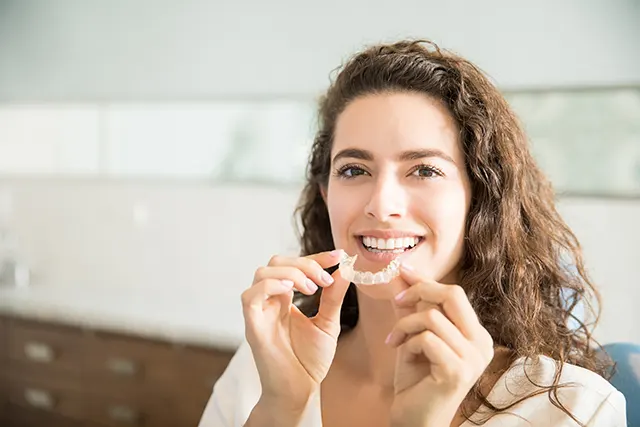 For many years, traditional metal braces were the go-to treatment for patients with misaligned teeth. However, in the 1990s, Invisalign was introduced to the market as an innovative alternative.
For many years, traditional metal braces were the go-to treatment for patients with misaligned teeth. However, in the 1990s, Invisalign was introduced to the market as an innovative alternative.
Invisalign is a brand of clear aligners designed to straighten teeth and correct misalignments including overbite, underbite, crooked teeth, and more. This system uses a series of clear aligners created from digital impressions of your teeth.
Each set of aligners puts pressure on your teeth, slightly shifting them into a new position, and, at the end of treatment, you have a straight, aesthetically pleasing smile. You wear each aligner for 1 to 2 weeks, based on your treatment plan, before switching to a new one.
For some patients, the dentists at Clarksburg Dental Center recommend attachments, which are small structures, similar to buttons, connected directly to your teeth. In this article, we’ll learn more about Invisalign attachments.
Each set of Invisalign clear aligners differs slightly from the shape of your teeth, which forces your teeth into their new position. However, due to this slight difference, the aligners sometimes need some help, which is where attachments come in. Only patients with more complex situations require attachments.
Invisalign attachments are small studs, or buttons, made of composite resin that are placed on the teeth to hold the aligners in place. Attachments allow the aligners to get a good grip on the teeth to push them into their appropriate position. Attachments may also be used to anchor elastic bands, which help align the bite and move the teeth into their appropriate positions.
Each set of aligners is shaped slightly differently than your teeth, which is what pushes them into a new position. In some cases of malocclusion, patients have teeth that are difficult to move due to their size, shape, or angle. In these cases, attachments can be used to allow the aligners to get a better grip on the teeth. Attachments allow patients with severe malocclusion to take advantage of this orthodontic treatment.
Due to the pressure of the aligner on the attachments, you may have some discomfort when you first get your attachments or when you switch to a new set of aligners. This discomfort will dissipate with time and is easily managed with OTC pain relievers. If you have significant discomfort or can’t get any relief, it is important to schedule an emergency visit as quickly as possible.
Typically, Invisalign treatment lasts 12 to 18 months. The attachments may need to stay on throughout the entirety of treatment or they may be removed after a certain time. This will be determined during your consultation as we build your personal treatment plan. In some cases, an attachment may fall off due to the force of the aligners on the teeth and tooth movements. Simply contact the office and we can schedule an appointment to have it replaced.
While the attachments are a tooth-colored resin, they are visible when compared to wearing the aligners alone. The best way to keep them as discreet as possible is to keep them clean by practicing proper oral hygiene habits and avoiding foods and drinks that can stain them.
No, Invisalign attachments are not a must for every Invisalign patient. During your consultation, Dr. Edmund Liu or Dr. Chung Lin will evaluate your condition and determine if you require attachments. Some of the most common reasons are:
– Invisalign clear aligners are designed to resolve mild to moderate malocclusions. However, it can still be used to correct severe malocclusions, with the help of attachments. The attachments allow the aligners to fit with your teeth, pushing them into position.
– Some patients have one or two teeth that are severely crooked. In this case, attachments can be placed on these teeth to move them into place.
While most patients do require at least one attachment, there are some cases where none are needed. These include:
– Patients who have mild to moderate malocclusion may not require attachments. This will be determined during your consultation.
– Since results are often visible within the first few weeks of Invisalign treatments, we will schedule an appointment to evaluate your progress. If it is determined that the aligners are working, you should not need attachments. However, if it seems that the aligners are not working, we may recommend attachments be added to the treatment plan.
There are several benefits associated with Invisalign attachments, including:
The steps involved in placing Invisalign attachments on teeth are as follows:
We start by treating your teeth with a special gel on your teeth and allowing it to sit for some time. This gel will allow the attachment to stick to your teeth. Before applying the bonding agent, the gel will be removed, and your teeth will be rinsed.
A small brush will be used to apply the bonding agent to the teeth. The attachments will be loaded into a template aligner, which will be placed on your teeth. The dentist will use gentle pressure to push the attachments onto your teeth.
Next, a special UV light will be used to harden/cure the attachments and the template aligner will be removed, along with any additional resin or bonding agent.
Once the attachments are in place, we will instruct you on how to put in and remove your aligners.
Invisalign attachments are similar to the brackets of traditional braces because they sit on the surface of your teeth. This provides a place for plaque to build up. However, with proper dental hygiene habits, you can prevent this. On the other hand, if you do not practice proper oral hygiene habits, plaque build-up can cause staining and/or discoloration around the aligners, which will increase the visibility of your attachments and aligners.
Additionally, if exposed to darker liquids such as sodas, coffee, and red wine, the attachments themselves may become stained.
If you are interested in exploring Invisalign clear aligners as a solution to your malocclusion, schedule a consultation with the team at Clarksburg Dental Center. We can evaluate your current condition and discuss your needs and budget to determine your options.
The team at Clarksburg Dental Center understands that dental procedures can be complicated, and many patients have questions. Any time you have questions or concerns, we are more than happy to address them. Some of the most common questions we hear about Invisalign treatment include:
The cost of Invisalign is comparable to that of traditional braces. On average, Invisalign ranges from around $3,000 to $7,000. This depends on the complexity of your misalignment, as well as whether you need attachments. This does not include additional procedures, such as extractions. Your dental insurance may cover a portion of treatment, which can help. Our friendly office staff will work with your provider to determine coverage.
If you need help paying for your dental care at Clarksburg Dental Center, we do offer financing options.
Invisalign attachments are not difficult to remove. However, you should never attempt to do it on your own. Once your treatment is complete, the dentist will remove the attachments. This procedure is fairly simple: they will use a tool to chip away the resin. Then, they will polish your teeth, removing any residue left behind. While you may feel some vibrations during the procedure, the process is painless.
Invisalign attachments are tooth-colored studs/buttons that are placed on teeth to allow the aligners to get a better grip on the teeth. These are primarily used in more complex situations.
For most patients, Invisalign treatment takes 12 to 18 months. However, patients with very mild misalignment may see results within 6 months and patients with more complex misalignments may need up to 24. This will be discussed during your consultation with the team at Clarksburg Dental Center.
Yes, research has shown that Invisalign is effective for correcting mild to moderate overbites.
Your aligners should be rinsed every time you place them in your mouth. However, this isn’t the same as cleaning them. You must also take the time to thoroughly clean them daily.
Use a soft-bristled brush with clear, unscented soap to clean them. You want to avoid using colored soaps, as they may cause the aligners to become discolored. Also, since it’s going in your mouth, you’ll want to avoid using perfumed soaps as well. As you brush your aligners, hold them under cool tap water. You can also purchase a cleaner specifically formulated for clear aligners if you wish- but this is not required.
If you have attachments, the best way to keep them clean and avoid plaque build-up and/or staining is to practice proper oral hygiene habits.



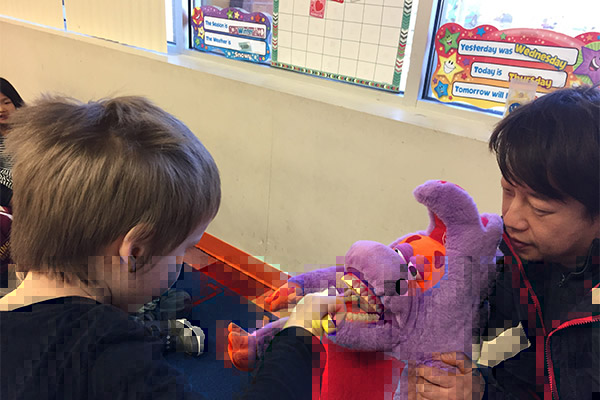

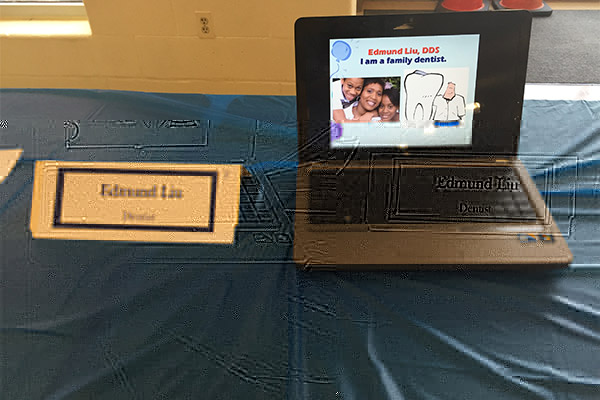


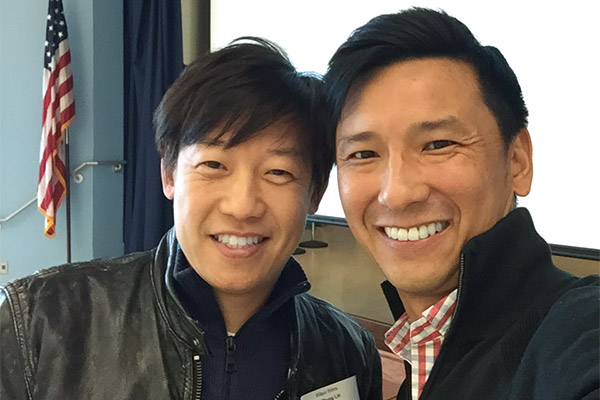




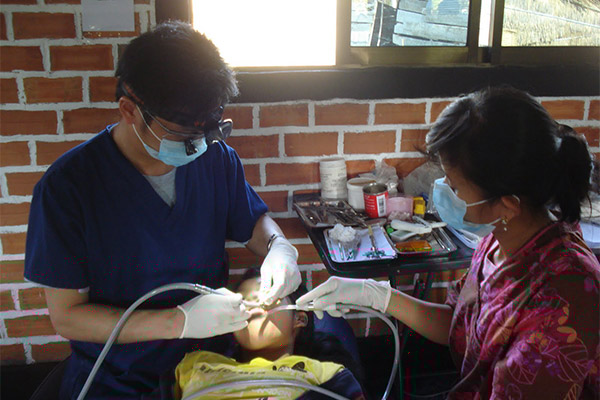
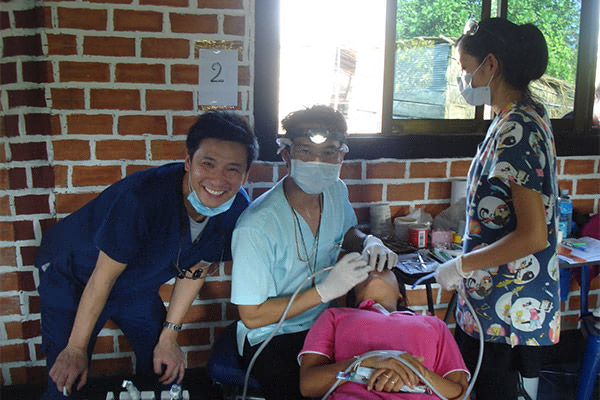




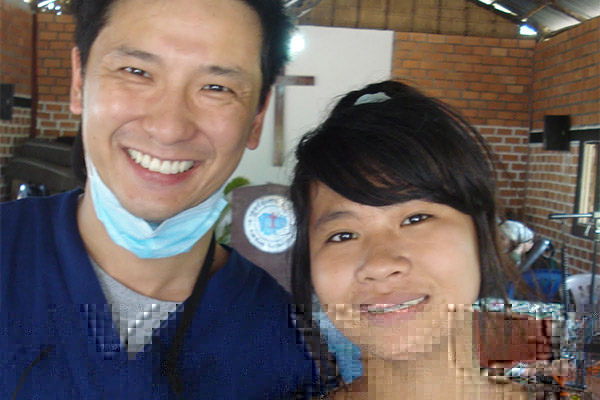
Use keywords in the search box below to find what you're looking for.
